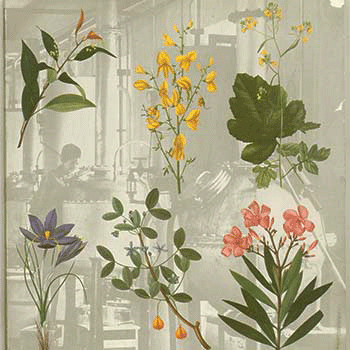
The power of scent

How our understanding of fragrance has changed. For 250 years Givaudan has been pioneering in the power of scent, on an ongoing odyssey to engage people’s senses and make the world smell better.
Our ability to smell is the most powerful and evocative of all our major senses. When we experience a scent for the first time our brain registers the impression evoked and stores it for years, ready to bring us back to a memorable experience at a moment’s notice. Even those of us working within the flavours and fragrance industry – surrounded by scent every day – experience the jolt of memory caused by a stranger’s perfume or a nostalgically familiar laundry detergent.
The power of connecting emotion, memory and scent has been known for a long time but our understanding of it is continuously progressing. For 250 years Givaudan has been pioneering in the power of scent, on an ongoing odyssey to engage people’s senses and make the world smell better.
As anyone working in the fragrance field knows, this neural link between scent and memory is caused by the simple fact that the olfactory bulb, which processes smells, has direct connections to the emotion and memory centres of the brain.
“The binding between the receptors in the nose and the odour molecules converts the information from chemical into electrical. It’s a translation from chemical language – the language of the environment – into an electrical one that the brain can understand. And it all starts with a sniff,” says John, Head of Neuroscience Research.
This means that creating fragrances are a fantastic tool for enhancing people’s minds and therefore their lives. One such recent innovation is DreamScentz™, an innovative, patent-pending technology enabling the creation of fragrances that enhance the quality of sleep. John’s team used electroencephalography (EEG) and other sleep measures to measure the brain activity of sleeping people in response to smells. Our development team then used the results to select fragrance combinations that improve sleep. Think of the potential for products like laundry detergent, candles, cosmetics, household sprays, etc.
“The first data point of our olfactory data bank comes from our mothers while we’re in the womb. Whatever they smell and taste, we smell and taste. New-born babies – even hours old – whose mothers during pregnancy had a diet rich in anise showed marked preferences for the scent of anise compared to other odours. From birth we’re constantly learning to smell. We’re inextricably linking odours with objects, words, places, people, memories and emotions. We’re building our very own fragrance landscape which we will continue to enrich as we continue to smell.”
John, Head of Neuroscience Research
Our understanding of the scientific background to a fragrance’s great power is relatively recent, but humanity has understood scent to be a fundamental tool for generations.

For centuries, the business of fragrance was more practical than pleasurable. In the 16th and 17th centuries people associated unpleasant smells with disease. Aristocrats surrounded themselves with perfumed objects and products, for instance cosmetics, powders or gloves, mainly in the hope that their pleasant smell could ward off sickness. Pomanders, small metallic balls filled with aromatic substances, were held at reach at any time of the day for this purpose. Similarly, people fumigated their homes with aromatic plants to protect against infection.
“The use of perfume became [focused on] consumer products: soap, pomades, perfumes, and then shampoo,” says fragrance historian and Givaudan Perfumery School Programme Manager, Eugenie on the rise of industrialisation “The use of perfumery products on a larger scale meant that little by little perfumery products became a part of everyday life.”
Watch the sense of smell animation
The modern scent
While European aristocracy had long used perfume for seduction, it was only during the early 20th century, with the rise of new players from the world of fashion, that fragrance became synonymous with pleasure for a large number of people. This saw a shift in our modern understanding of fragrance.
Contemporary society now marries the two uses of fragrance, as we understand scent as both an expression of individuality and an essential component of improved wellbeing. Whether that’s in the capability to personalise perfume to express individuality, the alleviation of ailments both physical and emotional (nausea, stress), or the use of active ingredients in beauty products.
Fascinating and formidable
From perfume to washing powder, the uplifting scent of jasmine in high-end department stores to the use of scent to enhance your movie experience in 4D cinemas, we use fragrance to trigger emotion, create memories, cure ills or foster a comforting sense of familiarity. It’s a fascinating and formidable tool: at Givaudan we have been using fragrance to delight consumers all over the world for 250 years.
Our understanding of how scent works has evolved as we have, but our understanding of its importance has never wavered over the centuries. At Givaudan, we are proud to have the resources, expertise and passion to harness this power and we continue to look for new innovations and uses.
Our 250-year journey continues. Why don’t you join us?
Podcast with John, Head of Neuroscience Research (00:13:32)